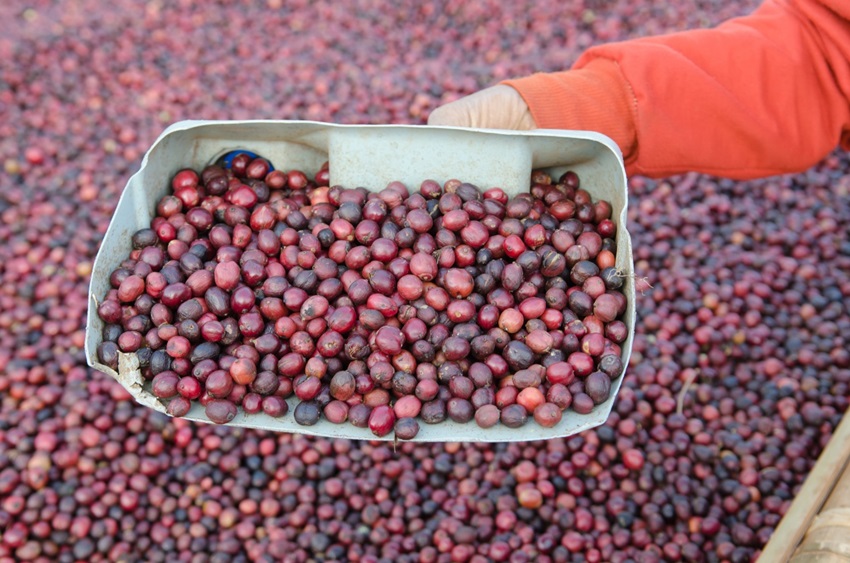Introduction to coffee bean classification: eight classification rules for coffee bean classification

For professional baristas, please follow the coffee workshop (Wechat official account cafe_style)
It is a pity that there is no unified international standard for coffee quality, which is only graded by several unique coffee characteristics of each country of origin. Most grades are based on the appearance (size, uniformity, color) of coffee beans; the number of defective products in each sample; cup quality (cup quality), which also includes taste and shape, and whether coffee beans are well roasted. The types and terminology of coffee caf é s vary from country to country, and the quality criteria are only suitable for locally grown coffee, so it is not easy to really explain the quality of coffee beans without understanding the grading system of the origin.
Coffee may have exotic regional names or may be classified by process (such as washing or drying). For example, in Kenya, a bag of coffee beans may be washed "AA", plus a number representing 10 brewing quality grades.
Most Caribbean and Central American countries use grades that represent high levels: for example, the coffee trees in El Salvador are Arabica, mainly Bourbon and Pacas. The coffee is refreshing and uniform, which is divided into three grades according to altitude, namely SHG (Strictly High Grown), SG (High Grown) and SC (Central Standard). Coffee beans in Mexico are washed and divided into three grades according to their height.
Several classifications of coffee beans
■ market name: usually named after the export port or after the origin of the coffee farm.
■ Coffee Tree name: Arabica has always been synonymous with good coffee.
■ is named for the treatment of coffee beans: washing and drying.
■ latitude: the higher the latitude, the better the quality of the coffee.
■ defect level: such as scorched black, broken beans and immature beans, mixed with branches, stones and impurities.
■ according to the size, shape and color of beans: no matter the grain size or flat or not, as long as it is "hard beans" is the first choice of coffee, particularly mellow, with acidic taste.
■ is classified by the plant itself: new or old, and the classification is determined by the age of the tree.
Age of ■ coffee beans: most beans taste better after 5 to 10 years, but they can still be grown.
And in terms of.
Important Notice :
前街咖啡 FrontStreet Coffee has moved to new addredd:
FrontStreet Coffee Address: 315,Donghua East Road,GuangZhou
Tel:020 38364473
- Prev

The most suitable recipe for 6 fancy coffee drinks in coffee shop in winter & operation course
Professional barista communication please follow the coffee workshop (Wechat official account cafe_style) Ole Coffee (Cafe Au Lait) features: Ole Coffee is like the French version of latte, is coffee drunk in a large cup. Materials: 1. Deeply roasted hot coffee II. Hot milk and foaming milk foam practice: A. Deep-roasted hot coffee and hot milk, respectively
- Next

How can espresso and milk foam be made without a large espresso machine?
Professional barista communication please follow the coffee workshop (Wechat official account cafe_style) how to play fresh milk foam at home? How can espresso and milk foam be made without a large espresso machine? After seeing how to operate the mocha pot (Mocha Pot Operation), you still can't drink a cup of latte at home because you are missing the most important foam! But there is no mainframe
Related
- Why are the coffee in some coffee shops not enough after being frozen? What should I make up for my American latte cappuccino coffee after being frozen?
- How much water does it take to steam coffee by hand? Why is the coffee brewing and steaming time 30 seconds? What is the purpose of steaming coffee?
- The suspected drink contains too much caffeine! Overlord Tea Lady responds urgently!
- Starbucks rejects antique paper coupons?! Netizen: Missed marketing opportunities!
- What ratio of water temperature and ground does the smart cup method use to press coffee? The difference between brewed coffee and filtered coffee?
- What is the standard process for the purpose of coffee cup testing? What is the difference between hand-brewed coffee and cup testing?
- How to use hand-brewed coffee paragon small golden balls? How does cold coffee lock in the aroma of coffee?
- Is American coffee black? What is the difference between American coffee and drip coffee?
- Unexpected! Well-known tea beverage brand Lele Tea will withdraw from the Zhengzhou market!
- Starbucks enters the fashion and beauty industry?! Netizen: Give me an ice American eye cream

